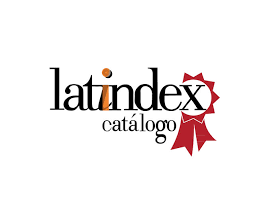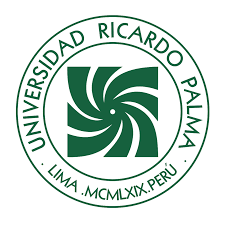Uso de PROTEUS y la CYCLONE II para la enseñanza práctica de VHDL y FPGA por medio de software y hardware
DOI:
https://doi.org/10.31381/perfilesingenieria.v21i22.7299Palabras clave:
FPGA, cyclone II, VHDL, PROTEUSResumen
El presente artículo tiene como objetivo trabajar con PROTEUS y la FPGA Cyclone II para diseñar un circuito contador de 3 bits en software y hardware. Para la parte de software se usará PROTEUS, ya éste trae la GAL22v10, CPLD reprogramable fabricada por la empresa Lattice Semiconductors. La descripción VHDL se hará por medio del software Cypress Warp Galaxy, éste genera un archivo .jed a partir del archivo VHDL construido, el archivo .jed se usa para grabarlo en la GAL y poder así simular la descripción hecha. El software Galaxy es de libre uso y se necesita una máquina virtual porque trabaja con Windows XP. Se usará Virtual Box como software de Virtualización perteneciente a la empresa ORACLE. En lo que respecta a la FPGA, se usará la cyclone II ep2ct144c8n de la empresa INTEL FPGA. La cual se va a programar con el software Quartus II 13.0 sp1. Como resultado se tendrá el circuito simulado en PROTEUS con la GAL 22V10 y en hardware con la tarjeta cyclone II.
Descargas
Citas
INTEL, “Cyclone II Device Handbook, Volume 1”, 2008. [En línea]. Available: https://www.intel.com/content/dam/www/programmable/us/en/pdfs/literature/hb/cyc2/cyc2_cii5v1.pdf.
INTEL, “Descargar software QUARTUS II”, 2021. [En línea]. Available: https://www.intel.com/content/www/us/en/software-kit/666221/intel-quartus-ii-web-edition-design-software-version-13-1-for-windows.html
INTEL-ALTERA, “Quartus II Handbook Version 13.1. Volume 1: Design and Synthesis”, 2013. [En línea]. Available: https://www.intel.com/content/www/us/en/softwarekit/666221/intelquartusiiwebedition-design-software-version-13-1-for-windows.html
A. Ivanova, “A Concept of Visual Programming Tool for Learning VHDL”, IOP Conference Series: Materials Science and Engineering, 2020.
E. Saeed, Basics VHDL Labs. Basics Lab for Learning VHDL. Learning with Experiments, Al Nahrain. Irak: Lap Lambert, 2020.
L. Chuquimarca, P. Suárez y F. López, “Simulación electrónica del microprocesador GAL22V10 mediante el software Proteus basado en VHDL para virtualizar circuitos integrados”, Revista Científica y Tecnológica UPSE, vol. 8, nº 1, pp. 107 - 115, 2021.
P. Kumar, “Development of Programmable Logic Devices”, International Journal of Innovative Research in Computerand Communication Engineering, vol. 8, nº 4, 2020.
R. Chopra, “A Review Paper on Virtualization”, International Journal of Innovative Research in Computer Science & Technology (IJIRCST), vol. 10, nº 2, pp. 131-135, 2022.
B. Sundstrom, Virtualization [undergraduate thesis]. University of Virginia, Charlottesville, Virginia, 2023.
P. Valencia, D. Garcia, S. Mena y J. Erazo, “Virtualbox como estrategia de enseñanza aprendizaje en la asignatura de soporte técnico”, Cienciamatria, vol. 6, nº 3, 2020.
M. Muhammad, I. Ismahani, S. Shahidatul y M. Musa, “The effectiveness of complex programmable logic device for learning digital systems during the COVID-19 pandemic”, Symposium on Teaching & Learning Practices in Electrical Engineering. Malaysia, 2021.
S. Syahminan y C. Hidayat, “Development of digital engineering learning with proteus software media and emulators department of informatics engineering Kanjuruhan University”, Annual Conference on Science and Technology (ANCOSET 2020), vol. 1869, 2020.
F. Chengcheng, L. Xiang, L. Ronghua y S. Boyu, “Application of proteus in Experimental Teaching and Research of Medical Electronic Circuit”, Advances in Social Science, Education and Humanities Research, vol. 215, 2018.
INTEL, “Intel FPGA USB Download Cable User Guide”, 2016. [En línea]. Available: https://www.intel.com/content/dam/www/programmable/us/en/pdfs/literature/ug/ug_usb_blstr.pdf.
S. Naing, N. San y T. Chao, “FPGA Based Digital Logic Circuits Operation for Beginners”, International Journal of Trend in Scientific Research and Development (IJTSRD), vol. 3, nº 5, pp. 495-501, 2019.
R. Deepack, “Design and Analysis of Digital Counters for VLSI Applications”, International Research Journal of Engineering and Technology (IRJET), vol. 3, nº 7, 2016.
H. Cao y U. Meyer, “XML-Based Automatic NIOS II Multi-Processor System Generation for Intel FPGAs”, Electronics, 2022.
T. Goethals, M. Sebrechts, M. Al-Naday, B. Volckaert y F. De Turck, “A Functional and Performance Benchmark of Lightweight Virtualization Platforms for Edge Computing”, IEEE International Conference on Edge Computing and Communications (EDGE), pp. 60-68, 2022.
J. Wang, J. Guo y C. Li, “On The Design of a Light-weight FPGA Programming Framework for Graph Applications”, Cornell University - Computer and Science, 2022.
F. Charte, M. Espinilla, A. Rivera y F. Pulgar, “Uso de dispositivos FPGA como apoyo a la enseñanza de asignaturas de Arquitecura de Computadores”, Enseñanza y Aprendizaje de ingeniería de Computadores, nº 7, 2017.
G. Garay, A. Tchernykh, A. Yu, D. Sergey, N. Garichev, S. Nesmachnow y M. Torres, “Visualization of VHDL-based simulations as a pedagogical tool for supporting computer science education”, Journal of Computational Science, vol. 16, 2019.
R. Navas, O. Oballe, J. Castellanos y D. Rosas, “Practice Projects for an FPGA-Based Remote Laboratory to Teach and Learn Digital Electronics”, Information, vol. 14, p. 558, 2023.
Publicado
Cómo citar
Número
Sección
Licencia
Derechos de autor 2024 Pedro Selencio Landaeta

Esta obra está bajo una licencia internacional Creative Commons Atribución 4.0.
En caso de que el manuscrito sea aprobado para su próxima publicación, los autores conservan los derechos de autor y ceden a la revista el derecho de la publicación, edición, reproducción, distribución, exhibición y comunicación en el país de origen, así como en el extranjero, mediante medios impresos y electrónicos en diferentes bases de datos. Por lo tanto, se establece que después de la publicación de los artículos, los autores pueden realizar otro tipo de acuerdos independientes o adicionales para la difusión no exclusiva de la versión del artículo publicado en la presente revista (publicación en libros o repositorios institucionales), siempre que se indique explícitamente que el trabajo se ha sido publicado por primera vez en esta revista.
Para que quede constancia de este procedimiento, el autor debe llenar los siguientes formatos:

1.png)





